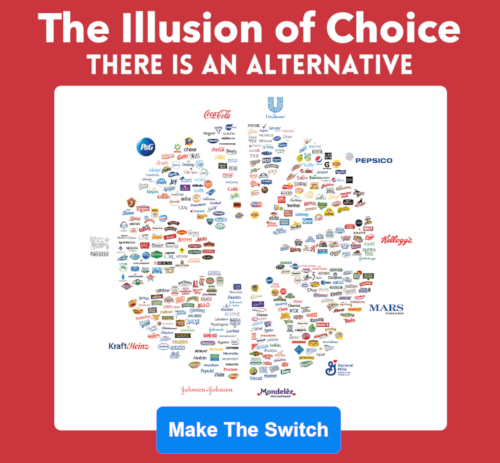Two Sides of the Argument
According to the World Health Organization (WHO) position on masks, “There is currently no evidence that wearing a mask (whether medical or other types) by healthy persons in the wider community setting, including universal community masking, can prevent them from infection with respiratory viruses, including COVID-19.” The CDC recommends wearing a mask to prevent sick people from transferring the disease to healthy people, but not to prevent healthy people from getting the disease. An article published by Science Alert examining why experts are conflicted on the concept of wearing masks concluded, “wearing a mask to avoid viral respiratory infections such as COVID-19 offers minimal protection.” The article went on to explain that clinical trials, “did not show that wearing masks leads to any substantial reduction of influenza-like illness.”
If someone states publicly that we should not be wearing masks, after the usual barrage of name-calling, it is not unusual for them to be also lectured on how mainstream media and the prevailing public opinion is claiming that masks are effective in reducing the transmission of coronavirus.
If we were to have a logical, intelligent debate, weighing evidence from both sides, however, the questions that need to be raised are: Are masks actually effective in preventing the spread of covid-19? And, if they are effective, does this mean that we should be wearing them? And, by extrapolation, if masks actually prevent the spread of disease, since disease is always present in our society, shouldn’t we just wear masks all the time for the rest of our lives and end disease once and for all?
Nearly all researchers agree that masks block droplets. They also agree that even the best masks do not block viruses because they are too small. And nearly all research agrees that the droplets and viruses can enter through the eyes, which are not covered when wearing a mask. Additionally, if there is any benefit to wearing a mask, it would only be if people wore the masks properly, which they do not. A recent study said that people were only wearing them 50% of the time. It is unrealistic to believe that people will put on a mask in the morning, commute to work or school, and return home for supper without having removed the mask. They will remove it when they eat, drink, or smoke. Many people also remove them when they talk on the phone. Additionally, they will adjust the mask, again and again, over the course of a day, which will negate any benefit of wearing it.
After the 2010 influenza pandemic, six randomised controlled trials were published, exploring the benefits of the various mask options. The test focused on influenza-like illness (ILI) and the results showed poor compliance and the pressing need for future trials. Poor compliance is one of the biggest points that speaks against requiring the general populace to wear masks all day. The likelihood is that they will not wear them properly.
Are Masks Effective?
While the vast majority of people are violating mask integrity all day, any perceived benefit would be negated. Since 2010, six more trials have been published, and the results show “masks alone have no significant effect in interrupting the spread of ILI or influenza in the general population, nor in healthcare workers.” One of the tests actually showed that in Vietnamese hospital workers, transmission rates were three times higher with masks.
At the beginning of the pandemic, the World Health Organization (WHO), the Centers for Disease Control and Prevention (CDC), and even some popular media warned against wearing a mask. Afterwards, the public narrative and mainstream media shifted to the mantra that masks were necessary and that they saved lives. The justification for the change in policy is usually “we know more about the disease now.” This seems illogical as, from the beginning, Covid-19 was known to be a respiratory illness, similar to flu, SARS, and to previous coronaviruses.
The mode of transmission of previously known, flu-like illnesses are not dramatically different than Covid-19. When the official norm was proclaimed telling us not to wear a mask, we knew this was an airborne flu-like virus spread through droplets. After the shift to mandatory masks, it was known that this was an airborne flu-like virus, spread through droplets. Nothing had changed.
We never wore masks for flu epidemics, which, in some years, have killed in excess of 60,0000 Americans. The two worst years for flu in the US, not counting the Spanish flu pandemic, were 1967 with about 100,000 deaths and 1957 with 116,000. Why did we need to start wearing masks for Covid-19? Denmark has one of the lowest coronavirus death rates and they never made masks mandatory. Danish health officials explained “There is little conclusive evidence that face masks are an effective way to limit the spread of respiratory viruses.”
Finland and Holland are two other places with extremely low death rates and yet 80-90% of the population said they do not wear masks. The Norwegian Institute for Public Health reported, “if masks did work, then any difference in infection rates would be small when infection rates are low: assuming 20% asymptomatics and a risk reduction of 40% for wearing masks, 200,000 people would need to wear one to prevent one new infection per week.”
The WHO report “Advice on the use of masks in the context of COVID-19 Interim guidance” dated June 5, 2020 says, “Meta-analyses in systematic literature reviews have reported that the use of N95 respirators compared with the use of medical masks is not associated with any statistically significant lower risk of the clinical respiratory illness outcomes or laboratory-confirmed influenza or viral infections.”
Should We Be Wearing Masks?
A Hong Kong study found that wearing a mask provided only minimal benefit in preventing the spread of disease from the wearer to healthy people. And while the test demonstrated that masks did reduce the number of droplets passed from the wearer to others, they admitted they had no way of knowing what impact, if any, this reduction in droplets had on the transmission of disease.The fact that some countries may have claimed a tighter lockdown and broader mask usage than others does not prove that lockdowns or mask usage equate to lower infection rates.
First, any measure of the compliance with the lockdown or mask usage is subjective. Next, places like New York had a harsh lockdown and a high infection rate, while other US states had almost no lockdown and low infection rates. According to Tom Jefferson and Carl Heneghan, “ (it) is unwise to infer causation based on regional geographical observations as several proponents of masks have done. Spikes in cases can easily refute correlations, compliance with masks and other measures is often variable, and confounders cannot be accounted for in such observational research.”
Mongolia had zero domestic cases of Coronavirus, which many people attribute to a strict lockdown and the wearing of masks. The lockdown and wearing of masks are meant to prevent the spread of the virus from a sick person to a healthy person. But, since no one in Mongolia has the disease, it could not spread anyway, irrespective of a lockdown or masks. Therefore, the absence of the disease in Mongolia most likely is not due to lockdowns and masks.
What about Schools?
School will be starting soon and various states and districts have developed differing guidelines on how children can “safely” attend school. This discussion seems to ignore the fact that less than 200 children have died nationwide and that children are in the absolute lowest risk category of catching the disease. Children have a great deal of energy. They are active, playful, sometimes naughty, and disobedient. The likelihood that they will observe mask rules and guidelines properly for an entire school day, every day, is extremely small.
Keep in mind that there is little or no clinical proof that masks actually prevent the transmission of the disease. Given that children are not prime candidates for the disease, it would seem prudent to spare them the hardship of masks and protocols and let them get back to their normal lives. The same is true for adults returning to work, school, and church.
The final question that needs to be addressed in the mask argument is, why can we not have a mask argument? Why is anyone opposing the masks labeled disparagingly when there is such a large amount of scientific data supporting their argument? Why is mainstream media not running stories on both sides of this argument? And, finally, why are Americans allowing Facebook, Twitter and other social media companies to determine what is valid “covid misinformation”, only to block valid divergent opinion? When the masks finally come off, perhaps we will find out who was behind it all.
- The China Tariffs Must Stay - November 19, 2020
- Coronavirus: The Left’s Ministry of Truth - October 20, 2020
- Republicans Are The American Party - October 19, 2020
JOIN US @NewRightNetwork on our Telegram, Twitter, Facebook Page and Groups, and other social media for instant news updates!
New Right Network depends on your support as a patriot-ran American news network. Donate now


